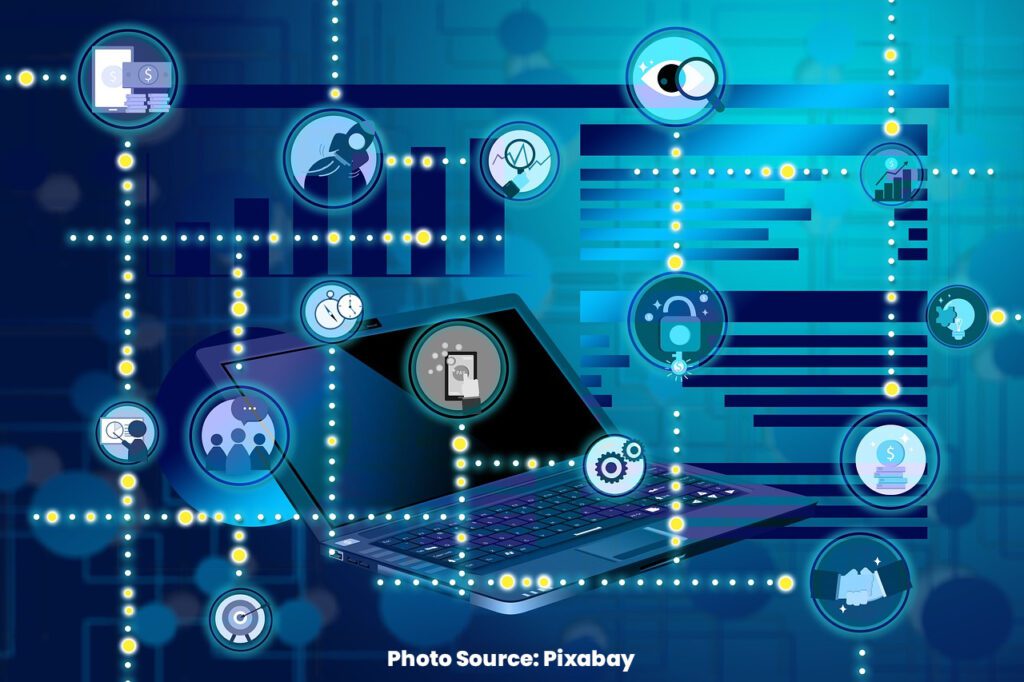
According to a 2022 study by We Are Social and Kepios, there are more than 76 million people (out of a population of 111M) In the Philippines who have access to the Internet. Pinoys spend more than 10 hours a day connected to it using various channels for communications, entertainment, learning, news, and commerce, amongst other things. Given such a prevalent presence in the lives of people, digital has become a viable means for brands and services to promote themselves and engage with customers.
Digital Marketing is defined as the use of digital channels enabled by technology to help products and services connect with potential customers. Everything outside of the traditional advertising touchpoints of TV, cable, radio, and print would, often, fall in the realm of digital channels and platforms.
Web 1.0, 2.0, and 3.0
Before examples of digital channels and platforms are given, it is important to understand the different stages of the world wide web as the digital age comes with its own set of terminologies, that keeps developing and changing at lighting speed. As a matter of fact, the internet has evolved far from the original invention of Tim Berners-Lee, the computer scientist who invented the world wide web in 1989.
- Web 1.0 or Read-only Web is a collection of static read-only websites that users could not interact with. An example is original version of old websites intended for people to read information.
- Web 2.0 or Participative Social Web allows users to interact by sharing and collaborating in more meaningful ways. Examples is social media, blogs, podcasts, web-based applications intended for people to participate and contribute like commenting, voting, tagging, etc.
- Web 3.0 or Semantic Web is an extension of Web 2.0 but made more intelligent and easier to use with the addition of meaning and context to the idea that is shared online. Examples are digital assets like crypto currencies (like Bitcoin), and fungible tokens (like Ether), digital content like non0fungible tokens (NFT), as well as metaverse, blockchain games intended to have decentralization (without intermediaries) and autonomous internet without need for authorization, using artificial intelligence, and machine learning.
Deep diving in the complexity and ever-changing landscape of the digital realm, digital marketing has spun-off as a separate branch or subset of advertising and promotions, as shown below.
| Digital Channel Categories | Examples |
| Websites / Blogs | Wikipedia, Reddit, Medium, New York Times, Brand Websites |
| Search Engine | Google, Bing, Yahoo, Baidu, Yandex |
| Social Networks | Facebook, Twitter (x), Instagram, Linkedin |
| Video Platforms | You Tube, Snapchat, Tiktok |
| Audio Platforms | Spotify, Apple Music |
| Mobile Platforms | SMS, MMS, iMessage |
| E-Commerce | Amazon, Alibaba, Lazada, Shopee, Zalora, Pick-a-roo |
| Online / Mobile Gaming Platforms | Mobile Legends, Roblox, Fortnight, Minecraft |
| Messaging Apps | Viber, Messenger, Telegram, What’s App, WeChat |
| Influencers | Donnalyn Bartolome, CongTV, Nana Guerrero, SassaGurl |
| Apps | GCash, UnionBank Online |
Understanding Digital Marketing and its Functions
While both advertising and digital marketing’s function is to inform, persuade, and to remind, digital marketing as enabled by technology, has allowed it to cover a wider scope of marketing functions from advertising, sales promotions, public relations, and even selling. For instance:
Advertising in Digital Marketing
- Technology and profiling tools present in digital platforms have allowed brands to profile, target, and localize who they would want to talk to. Segmenting audiences has never been easier since customers can be filtered based on their demographics, location, behavior, and even interests.
- When a brand releases a caption, poster, or an audio or video material, how each performs can be tracked and measured faster than traditional media. You can see how many people have seen it, or interacted with it, and you can even filter the locations and types of people who saw the advertising campaign. This provides marketers the ability to get a faster feedback loop to improve or capitalize on their campaigns.
- One-on-one conversations and interactions between brands and customers are also now possible through digital platforms because people can easily comment, message, and even react to advertising through the digital platforms they are present in.
Sales Promotion in Digital Marketing
- PUSH strategies that allow brands to gain customers and nudge them to buy immediately are now possible in the digital space. Online vouchers, affiliate links, flash sales, and location-based messaging blasts, are amongst the numerous means that sales promotions are made possible digitally. Customers targeted by these efforts are then led to online or brick-and-mortar stores to purchase. For example:
- In shopping apps like Lazada and Shopee, merchants can push free shipping fee vouchers, bundle discounts, and cash discounts to customers.
- Online personalities promote shopping codes or affiliate links to customers granting them exclusive discounts and promos of the product they are using in their vlogs and photos.
- Banner ads that when clicked lead to websites, are also used by brands for exclusive and time-bound deals for customers.
- The emergence of “flash-sale” websites has created time-bound sales promos that entice many people to avail of the promo during a limited time period. This sometimes lasts for only one hour or less depending on available products.
Public Relations in Digital Marketing
- With content and communications democratized by technology, everyone can now have their own platform to communicate and build communities. This ushered the emergence of online personalities, key opinion leaders, and influencers who have become part of the avenues to gather information and opinions. Including key influencers in the formulation of marketing communication cannot be underestimated.
- Annoyed customers today are different. They just post their complaints in their social media feed for everyone to read. Even if a company or its stakeholders are not directly involved in a problem but could have done something to help, public opinion may still go against them.
- Virtual events and experiences are now made possible through digital technologies. People and brands can interact with each other in communities, video calls, and gaming platforms. Take these examples:
- Teleconferencing Platforms: Zoom, Google Meet, or MS Teams – these have allowed remote working possible for people, removing the need for a physical office.
- Gaming Platforms: Popular online open-world games like Fortnite, Roblox, and Minecraft have allowed brands to create their own digital experiences within these platforms where virtual concerts, branded places are created in these games.
Selling in Digital Platforms
- The emergence of e-commerce platforms and providers has allowed customers to purchase without the need to go to a physical store.
- The retail landscape has evolved from brick-and-mortar stores to hybrid and fully digital selling platforms. For instance:
Hybrid Platform:
- SM Supermalls created a website and a mobile app called SM Malls Online that allows customers the option to buy from SM merchants from its department store, supermarkets, restaurants, cinemas, and retail stores of a nearby SM Supermall, with the option for the customer to have the products delivered to their homes or picked-up in-store.
- Mercury Drug Online allows the customer the option to purchase via a phone call, text message, or online — making it more convenient for everyone to have access to their products. These can then be delivered or picked-up by customers.
Fully Digital Store:
- Pick-a-roo is a mobile app which does not have a physical retail store. Instead, it curates location-based merchants such as restaurants, groceries, and shops. Pick-a-roo’s buyers will purchase the items for the customers and deliver the order to them.
- Lazada, Shopee, and Zalora are online marketplaces which curate not only local but international merchants and brands for customers to purchase through their mobile phones or digital devices. These platforms incorporate various push and pull techniques to grow their customer base and purchases.
The objective of digital marketing must be aligned with your advertising objectives. It must be well defined and relevant to the existing market situation. The challenge is finding the sweet spot where you can build trust between your brand and your customers in the digital space.
***
Josiah Go, Chiqui Escareal-Go, and RG Gabunada are co-authors of the book ‘Marketing for Beginners: Start Strong, Succeed Fast,’ currently the number one marketing book in the Philippines with around 500 Philippine examples. The book, which broke all-time launch sales records in the Philippines, is available at National Book Store nationwide.


